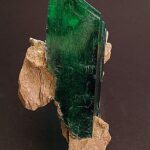Short answer rocks and gems near me
To find rocks and gems near you, consider visiting local rock shops, gem shows, or mining sites. You can also search online for collectors’ clubs or hobbyists who could offer guidance. Remember to always get permission before collecting specimens in nature reserves or private land.
How to Discover the Hidden World of Rocks and Gems near Me
From sparkling diamonds to lustrous pearls, the world of rocks and gems is a mesmerizing one. But did you know that you don’t need to travel far and wide to discover this hidden treasure trove? There are countless gemstones waiting for you right in your backyard!
If you’re interested in venturing into the magical world of rocks and gems, here’s how to get started:
1. Research Gemstone Locations: Before setting off on your rock-hounding adventure, do some research on where certain types of gemstones can be found near your location. Every region has its own unique geological features that determine what type of minerals can be discovered there.
2. Plan Your Route: Once you’ve identified potential locations for finding particular stones, it’s time to plan out your route. Make sure to check any necessary permits or land access restrictions before heading off-road.
3. Gear Up: Rock hounding requires certain gear such as sturdy footwear, gloves, pickaxes or shovels (depending on the expected terrain), and protective eyewear.
4. Know What You’re Looking For – Learn about different varieties by using books and online resources so that when possible you won’t ignore valuable finds.
5. Go with a Buddy:It’s always recommended going with someone else while hunting down unfamiliar trails/areas because unforeseen dangers may come up unexpectedly
6.Start looking- Don’t be afraid to dig deep! Look out for spots where water used run through overearlier times; sometimes these areas have enough gravel content which might contain flint formations nearby larger pieces will usually indicate ores like gold,silver,copper bearing veins lurking beneath etc .
7.Examine Rocks Properly – Using basic identification techniques i.e.,color,test streaks,density -,it’s easier than one would guess how many different kinds exist—everything from crusty surface textures formed by extreme heat forces(magma bubbles)to super smooth polished surfaces(tumbling) making them perfect for jewelry
8. Visit Gem Shows: Check online or local listings of upcoming gem and mineral shows in your area where you can get better access to specialized knowledge plus the opportunity to buy, trade and chat with enthusiasts & professionals.
9.Consider Joining a Club :If this sounds like something that interests you,it might be helpful joining local rock hunting clubs,museums,school science exhibitions etc-this will connect directly with other significant sources of information
10. Respect Nature: Lastly, it’s essential to remember to leave no trace behind on these natural wonderlands out of respect towards nature’s beauty, ecosystem ,and heritage treasures . Do not mess around too much by disrupting soil integrity; always use ethical practices during collection while being mindful about home-related dangers (e.g., dust contaminations)
Rock-hounding is a fantastic way of discovering the hidden world of rocks and gems near you! Follow these steps above so as not only wittingly but also clever how-to instructional guide points-and before long, you’ll find yourself immersed in an exciting new hobby that combines both adventuring outdoors experiencing stunning geological features all at once.
Step-by-Step Guide to Rockhounding: Finding Gems Near Me
Rockhounding, also known as amateur geology or recreational mineral collecting, is the thrilling hobby of searching for beautiful and valuable gemstones in natural environments. Whether it’s quartz crystals tucked away in a Missouri mine or ancient fossils scattered throughout Utah’s deserts, there are countless treasures to be discovered if you know where to look.
If you’ve been bitten by the rockhounding bug but don’t know where to start, fear not! This step-by-step guide will give you all the information you need to find gems near you while having an absolute blast doing it.
Step 1: Pre-Research
Before starting your adventure on finding gems, research about local geo parks available nearby your region. Figure out what kind of minerals can be found in these areas more frequently than other regions. You can even consider purchasing books that provides detailed clues related to different types of precious stones before heading out for exploring them.
Step 2: Gear-Up with Essential Tools
Next up is gathering essential tools that make finidng easier which includes gloves for protection against sharp rocks and edges; leather pouches/ backpacks/ buckets to store newly-found rocks; maps and navigation tools like compass or GPS device further aids towards this cause.
A handy magnifying glass/spade/trowel featuring serrated edge along with screwdriver/mattocks (for prying specimens) could come-in-handy when digging deeper into ground layers.
Step 3: Identifying Potential Locations
In order figure-out locations those have high probability for yielding good returns needs much effort upfront. As beforehand mentioned sources , libraries might carry helpful guides which pinpoints potential locations via topographic surveys referencing beyond due-diligence!
Alongside libraries one cannot miss overlooking regional treasure hunting clubs too! They offer first-hand experience sharing conversations from seasoned experts who share their years-long knowledge-base sitting through novice hounds hungry particularly from learning alongside experienced counterparts .
Points-of-interest flagged as public spaces like National Parks, state parks & museums those with aquatic resources like sea or lakes could make noteworthy conducive hunting host-spots as well.
Step 4: Permission Acquiring
Either hiking through national/state park regions/geologically interesting areas demands a permit issued by respective departments. While some private lands might enforce trespassing-against policies but there are others which has benefits of allowing tramping around on their properties in exchange for precious stones yielded to them post-expedition.
Suggest reaching out landowners beforehand via telephone or e-mail exchanges to obtain requisite permissions prior pro-planned excursions .
Bonus Step : Other than discovering rocks and minerals buried deep beneath the earth’s surface another strong motive behind rockhounding is enjoying nature – take pre-cautions while exploring unknown places ,take loads of photos preserving memories even on top of finding that big shiny silver nugget!
Common FAQs About Finding Rocks and Gems Near Me
Finding rocks and gems in your locality is an exciting hobby that can lead to spectacular discoveries. Whether you are a seasoned rockhound, or just starting out on this thrilling quest, there might be some questions you have about finding precious stones near you. Here are some common FAQs about finding rocks and gems near me:
Q: Where do I start looking for rocks and gems?
A: The first thing to do when trying to find rocks and gems nearby is research the geology of your area. Find out what kinds of mineral-bearing formations exist within easy reach of where you live by consulting geological survey maps or topographical guides. From there, scout areas with hard surfaces such as hillsides, riverbeds, beaches or even construction sites.
Q: What tools do I need to start hunting for minerals?
A: Rockhounding involves more than just picking up any shiny substance from the ground; it requires special tools like hammers, chisels and shovels among others depending on the type of deposit being hunted down. You also may require a sifter box if you plan on visiting streams frequently since they come in handy while searching through sandbanks.
Q: Can I collect all types of minerals in my state? A:
Laws vary from one jurisdiction to another regarding stone collecting so check with local government authorities before venturing out in search of treasures. In most places around the world acquiring gemstones cannot be done without obtaining permits especially if they’re located on protected land.
Q: How will I know if what I’ve found is valuable?
A: Although aesthetics play majorly into determining value that knowledgeable individuals examine various aspects including whether their specimens exhibit optical properties like transparency or luminescence under certain lighting conditions and other characteristics unique to specific minerals.
Q: Is it okay for me to keep everything that I find during exploration trips?
A:The golden rule states ‘leave only footprints’ meaning anything which is not a natural part of the terrain should be removed. Collecting specimens becomes an issue if they disturb sensitive environments or lead to erosion.
Q: Can I take my kids along with me?
A: Rockhounding is perfect for individuals of all ages who may benefit from spending time outside particularly away from unhealthy digital activity. Involving young people in your exploration trip can also help foster learning opportunities, and ignite their interest about geological processes
Rockhounding can be an enjoyable hobby as long as you follow ethical practices and proper steps. Gathering mineral specimens requires careful attention when deciding where to look, what to bring along for supplies, reading state regulations that govern collecting minerals among other considerations which we hope this list has addressed some common questions or concerns one might have during the growth field of rockhounding. So get out there and unleash your sense of curiosity!
Top 5 Amazing Facts about Rocks and Gems You Can Find Near Me
1) Diamonds Are Not as Rare as You Think:
We often consider diamonds as rare & precious stones but in reality, they are one of the most commonly found minerals on Earth! The reason why diamonds hold such high value is because of the immense amount of pressure required for their creation deep within the earth’s interior. Today, diamond mines are located throughout Africa, Russia, Canada and Australia.
2) Granite is Used to Make Headstones:
Granite comes from a Latin word “granum” meaning “grain.” It gets its name due to its rough texture that resembles grains or small particles. Due to its durability and impermeable nature granite has been used for centuries for architecture and construction work. In addition to this it is also used mainly in gravestones as well which happens be interesting fact right?
3) Turquoise Has Cultural Significance:
Turquoise was first discovered in Persia (present-day Iran), thousands of years ago. Over time turquoise began spreading across cultures where it held different symbolic meanings ranging from communication between men & gods in Egypt to good fortune associated with marriage among Native Americans tribes.In modern day Turkey remains one of the largest producers of fine-quality turquoise gemstone slabs.
4) Bismuth Crystals Look Artificial But They Aren’t:
Bismuth crystals come just below lead on atomic no scale.They aren’t so famous like other minerals but once seen makes us mesmerized by iridescent shades reflecting against bright light conditions revealing spectacular rainbow colors .It gives look almost artificial,somewhat resembling Jolly Rancher candies.But unlike candies, bismuth crystals are the result of natural processes.
5) Fluorescent Minerals Glow in Ultraviolet Light:
When exposed to UV light, certain minerals glow due to their property of fluorescence. The most common minerals that display this property include calcite and fluorite gems among others. This phenomenon occurs because of electricity generated within these rocks during exposure with UV rays causing them emit different colors depending on the type mineral at play!
In conclusion, these were just a few of many intriguing facts related to rocks and gems. If you come across any geological specimens in your travels or mining expeditions remember this – that piece may hold untold stories about our planet’s history!
Beginners’ Guide to Identifying Rocks and Gems Near Me
As a beginner, identifying rocks and gems can seem like an impossible task. With so many different varieties out there, it’s easy to feel overwhelmed and unsure of where to start. But fear not! By following some basic tips and tricks, you’ll be well on your way to becoming a rock hound in no time.
First things first: location is key. It’s important to know where you’re searching for rocks and gems in order to narrow down the possibilities of what you might find. Some great places to look include hiking trails, riverbanks or any areas that have recently experienced geological activity (such as landslides). Additionally, if there are any local gem or mineral shows happening near you, they might offer advice on specific spots worth checking out.
Once you’ve located your potential hunting ground, it’s time to get hands-on with your search. Before diving headfirst into collecting specimens however, make sure that doing so is allowed by law – certain protected areas may prohibit removal of certain natural resources without permits or clearance from park officials.
When looking at individual rocks or gems themselves, take note of their size and coloration; this will give you a better idea of what type of stone they could potentially be. For instance, if you find something small but sparkly it might be indicative pyrite (fool’s gold) vs finding large not-so glittery chunks elsewhere which could range from quartz crystals all the way up through feldspar minerals depending on region geography etc.). Additionally examining texture surfaces – such as jagged edges versus smooth facets- can also help distinguish whether the specimen is metamorphic (resulting from heat/pressure interaction over long periods), sedimentary(formed via deposits/shell accumulations getting compacted together), v/s igneous (derived due cooling solidification after lava/magma transfer).
You don’t need fancy tools when starting out – sometimes simply giving anything nearby a little bit extra examination can be illuminating: for instance, shale fossils or jasper chunks that were once located deep under the earth’s surface but now revealed through weathering exposure over time.
But if you do want to invest in some equipment, there are plenty of affordable options out there. A good idea is purchasing a basic rock identification guidebook as well as investing in a magnifying glass and/or jeweler’s loop; observe how striated depths within quartz crystals differ from sandstone sediments through closer inspection of specimen samples taken from your hunt. If you’re really serious about getting into gem hunting though (or looking at making jewelry), it may be worth splurging on lapidary tools which can help shape or polish stones with more precision after collection- all while providing an exciting and innovative new hobby outlet!
In short, identifying rocks and gems near you isn’t always easy – but like anything else worth doing pressing on despite obstacles often have its own rewards! By familiarizing yourself with geology basics like texture or composition ,recognizing colors/markings/size characteristic variances between different kinds & regions alongside helpful books/tools at hand, you’ll soon find yourself becoming better equipped to identify completely found worthy specimens every time!
Whether you’re a collector, rockhound, or simply intrigued by natural beauty, hunting for rocks and gems can make for a fun-filled adventure. But finding the right location can be tricky! Worry not as we’ve got insider tips on where to search next!
Let’s dive in.
1) Look up Local Rock Shops
Local rock shops are ideal starting points when it comes to searching for the best gemstones’ mining locations nearby. You will find shop owners who are passionate about these beautiful objects; they typically have knowledge of decent sites that frequently migrate through their hands since other mineral collectors usually enter trade-offs of different sorts.
2) Check out Lapidary Communities
If your love affair with rocks is more inclined towards cutting them into beautiful shapes & designs than collecting raw ones? Then lapidary communities should be your go-to spot. These clubs involve people enthusiastic about variegated skills associated with art & science crafts like engraving precious stones into jewelry pieces delicately solving technicalities like specific symmetry conditions during stone-cutting processes.
3) Head Outdoors: Fossicking Sites
Many state parks and national forests boast exciting “fossicking” opportunities (the term is used specifically on Australian side but became popular over time). Not only do you stand a chance to seek minerals from untouched regions while enjoying nature at its finest but also utilize sitting places created specially called sluice boxes which help sift through large dirt piles looking closely amongst rocks containing gems such as rubies or sapphires lurking beneath soil grains waiting patiently until others sweep past without noticing hidden treasures nowadays increasingly rare yet still unclaimed buys available at most clearinghouse auctions too.
4) Join Field Trips Organizers
Another option is joining field trips organized by universities or local geological societies around towns nearby. These trips usually cater to specific gems or minerals which obtain exposure by the group’s members. Not only will you meet individuals with like interests but gain guidance from expert rockhounds who know exactly where to hunt.
To conclude, while searching for rocks and gems near you might feel overwhelming initially, knowing your options can make it a fun adventure geared-up with information from locals running businesses around interesting locations to meeting people sharing similar hobbies in interactive clubs/groups planning outings/testing field sites together!
Table with useful data:
| Name | Type | Location |
|---|---|---|
| Agate | Semiprecious stone | Mount Horeb, Wisconsin |
| Thunder Egg | Geode | Black Rock Desert, Nevada |
| Chrysoprase | Gemstone | Marlborough, Queensland, Australia |
| Petrified Wood | Fossil | Petrified Forest National Park, Arizona |
| Opal | Gemstone | Coober Pedy, South Australia |
| Quartz | Mineral | Little Falls, New York |
Information from an expert: Rocks and gems near me are fascinating and plentiful. These natural treasures can be found all around us, whether it’s in mountain ranges or even underneath our feet. It’s important to know what types of rocks and minerals exist in your local area to appreciate their beauty and learn about the geological history of your region. Some popular places to search for rocks and gems include quarries, streams, and beaches with rocky shorelines. With a little bit of research, you’ll be able to uncover the hidden gemstones that lie beneath the surface!
Historical fact:
The area near you was once a rich source of minerals and gems, attracting prospectors in the late 19th century. In fact, several mines were established here during that time including ones for gold, silver, tungsten and even turquoise. Today, remnants of these mining operations can still be found scattered throughout the surrounding landscape.
![Discover the best rocks and gems near you: a personal journey with expert tips [2021 guide] - gulfgemology](https://gulfgemology.com/wp-content/uploads/2023/04/tamlier_unsplash_Discover-the-Best-Rocks-and-Gems-Near-You-3A-A-Personal-Journey-with-Expert-Tips--5B2021-Guide-5D_1681633709.webp)
![Transform your home with ply gem siding: a real-life story and 5 key benefits [expert guide] - gulfgemology](https://gulfgemology.com/wp-content/uploads/2023/04/tamlier_unsplash_Transform-Your-Home-with-Ply-Gem-Siding-3A-A-Real-Life-Story-and-5-Key-Benefits--5BExpert-Guide-5D_1681630003-150x150.webp)
![Discover the top 10 stardew gem bird locations: a guide to finding rare gems [with personal stories and expert tips] - gulfgemology](https://gulfgemology.com/wp-content/uploads/2023/04/tamlier_unsplash_Discover-the-Top-10-Stardew-Gem-Bird-Locations-3A-A-Guide-to-Finding-Rare-Gems--5BWith-Personal-Stories-and-Expert-Tips-5D_1681633708-150x150.webp)




